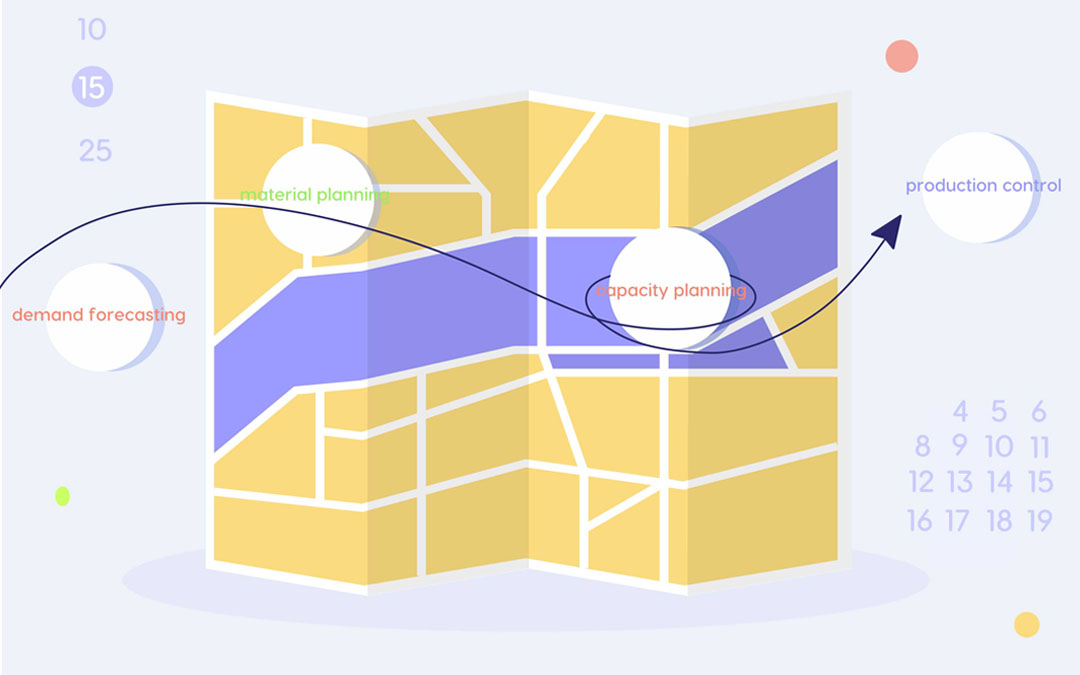In today’s dynamic manufacturing industry, effective production management has become increasingly challenging. However, proper production planning and scheduling is a must for manufacturers that strive to achieve production efficiency and stay competitive in the market.
What are the other benefits of production planning and scheduling? How to plan and schedule production activities with maximum efficiency? Our guide will put points on the board.
What Is Production Planning in Manufacturing?
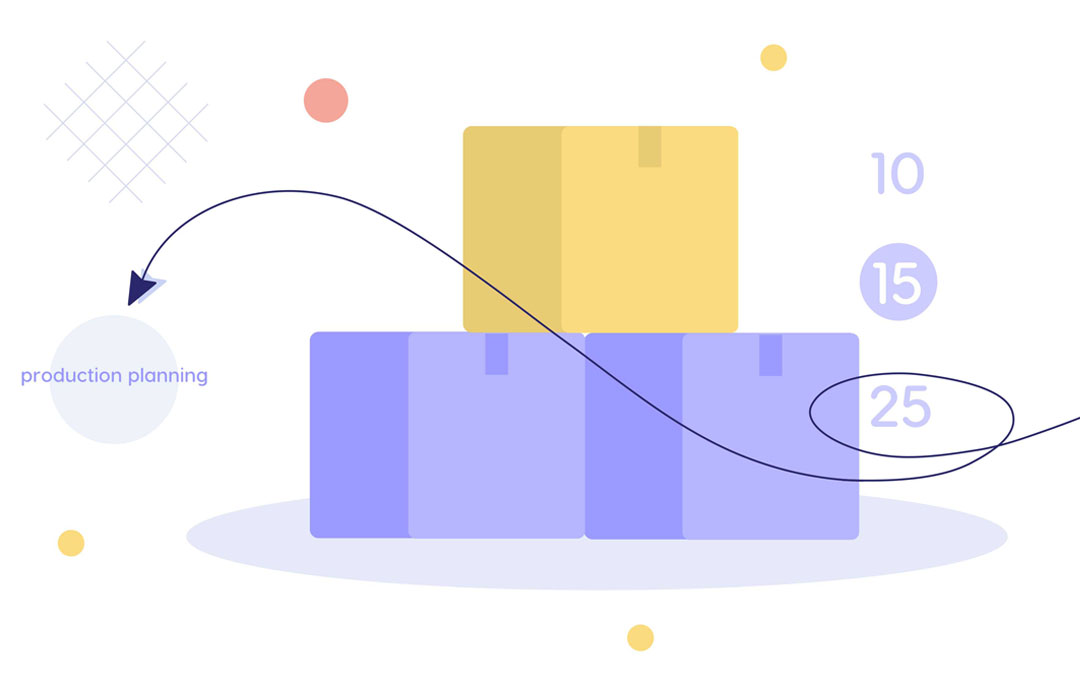
Production planning is a strategic process of organizing all steps and elements required for effective and efficient manufacturing. Creating a production plan involves identifying the products to create, production timelines, how products will be manufactured, required resources, etc.
The main goal of manufacturing planning is to ensure seamless and efficient production processes, optimize the use of available resources, balance demand and supply, and at the same time reduce delays, inefficiencies, and waste.
Why is production planning important?
Let’s review the benefits of developing a proper production plan in more detail.
Improved utilization of human and material resources.
Production planning in manufacturing industry helps anticipate the need for human and material resources and ensure their availability at the right time. This eliminates the risks of resource shortages and bottlenecks and contributes to maximum effective resource utilization.
Minimizing production costs as a result of reducing waste and inefficiencies.
Accurate demand forecasting and corresponding resource allocation help manufacturers avoid overproduction and unplanned expenditures, reduce waste and excess inventory, which contributes to manufacturing cost reduction.
Higher quality of the manufactured products.
Proper planning facilitates attention to detail, in particular implementing quality control measures in the manufacturing process. In addition, production planning promotes consistency between manufacturing processes, which in turn contributes to higher productivity and higher quality of the manufactured goods.
Meeting customer demand.
As we said earlier, production planning in manufacturing involves forecasting the demand for products. This increases the chances of satisfying customers’ needs.
Therefore, with a properly developed production plan, manufacturers can take control over all their processes and resources for timely and effective product delivery.
Types of production planning for manufacturing
Production planning can vary depending on the nature of the product, manufacturing environment, and production volumes.
Job production planning
This method of production planning is used when creating a single product, custom products, or the ones tailored to customers’ specific needs. Job production planning is suitable for smaller enterprises and for smaller quantities. It’s flexible and adaptable but usually requires a skilled workforce and specific equipment.
Batch production planning
This type of manufacturing planning process is suitable for manufacturing fixed amounts of products (or batches). Batch production planning should be careful to minimize downtime and reduce waste.
Flow production planning
This method serves continuous manufacturing processes, in which products “flow” from one manufacturing stage to another with minimum interruptions. Continuous production involves a regulated workflow and intensive quality control and is suitable for manufacturing large volumes of identical products.
Mass production planning
The mass production method is suitable for high-volume production, i.e., manufacturing large quantities of standardized products, including by automated systems. It’s similar to flow production planning but involves larger volumes of products.
Process production planning
This type of planning is typical for continuous and uninterrupted manufacturing processes, e.g., oil refining or chemical production.
Now, let’s figure out the essence of the manufacturing scheduling.
What is Production Scheduling in Manufacturing?
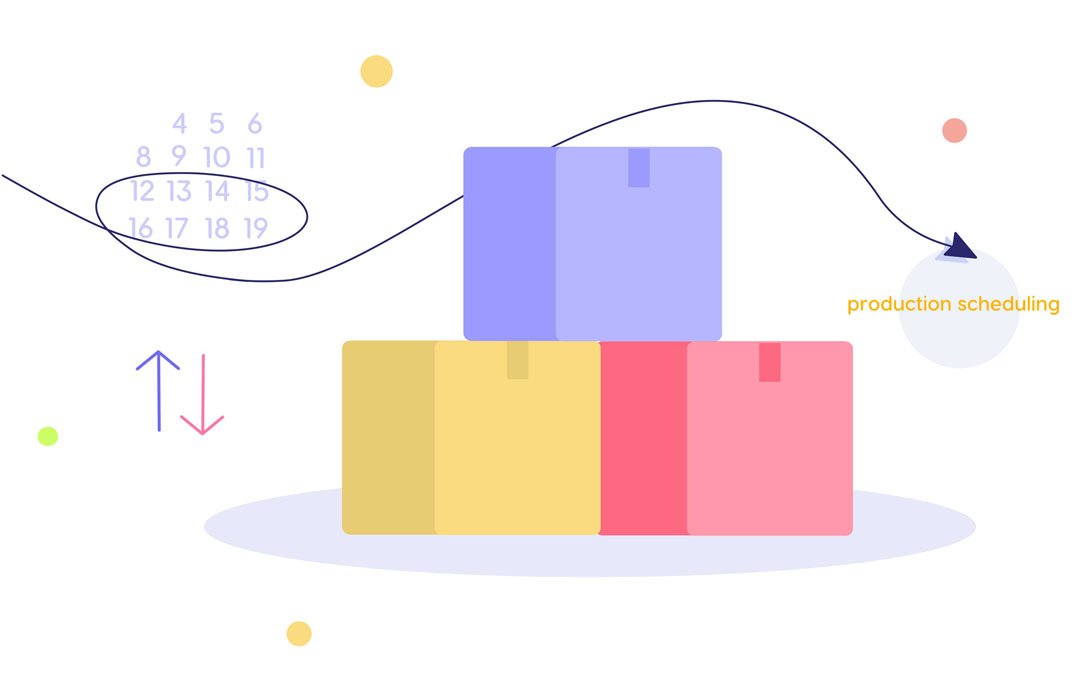
The production scheduling process involves creating an all-embracing timetable with all production activities in the required order and timelines. Efficient scheduling should take into account the availability and capacity of equipment and human resources, dependencies between activities, and existing constraints.
Compared to production planning, this process is more tactical.
The main goal of production scheduling is to streamline the production workflow; effective manufacturing production scheduling ensures the efficiency of the entire production process and timely delivery of products to customers.
Why is production scheduling important?
Effective production scheduling process will help manufacturing organizations achieve the benefits listed below:
Reducing manufacturing costs.
Production scheduling in manufacturing prevents over-utilization of material resources and equipment downtime. In addition, it prevents manufacturers from last-minute orders and shipment of raw materials, which can add to manufacturing costs.
Preventing bottlenecks.
Detailed scheduling lets production managers detect and prevent bottlenecks thanks to ordering manufacturing operations and allocating resources accordingly. Also, this helps avoid equipment and personnel overload as well as minimize idle time.
Streamlining the production process.
A well-developed production schedule establishes a clear timeline for every manufacturing stage and the required order of these activities. This results in smooth workflow, improved operational efficiency, and increased productivity.
Enhancing production efficiency.
Thanks to precise timing and proper resource allocation, production scheduling enables organizations to deliver more with less effort and resources. Efficient resource utilization also increases overall output.
Thus, manufacturing scheduling has an essential role in the production process, and shouldn’t be neglected.
Manufacturing scheduling methods
Forward scheduling
In this case, starting production at the earliest possible date matters most. So, all production tasks are scheduled starting from this day forward. The other peculiarity of this scheduling type is completing each activity as soon as possible. This approach helps manufacturers maximize the utilization of available resources.
Backward scheduling
A backward manufacturing schedule involves developing a sequence of operations starting from the due date. This scheduling type is used when timely product delivery is critically important.
Master production scheduling (MPS)
This type involves developing a production timetable on a high level. It takes into account the anticipated demand for goods along with customers’ orders to plan timelines for products. MPS is common for companies that create multiple products at the same time.
Finite capacity scheduling
In this case, manufacturing activities are scheduled taking into account resource constraints. This schedule ensures that production tasks won’t exceed the capacity of available resources and helps manufacturing teams optimize the utilization of available resources.
Infinite capacity scheduling
In contrast to the previous scheduling types, infinite capacity scheduling doesn’t take into account resource limitations; it focuses on meeting customers’ demand for products and production deadlines. This type of scheduling is suitable for companies that have more flexibility in terms of capacity and availability of resources.
Just-in-Time (JIT) production scheduling
This method involves scheduling production in accordance with the actual demand for products, not the anticipated demand, i.e., the products are manufactured only when they are needed. Materials are ordered according to production schedule, which in turn depends on customer demand, and arrive at the required time in the required quantity.
Production Planning and Scheduling: What’s the Difference?
Production planning and scheduling in manufacturing are interrelated processes and may seem very similar at first sight. But that’s not the case. Let’s look closer at the key differences between these two practices.
- Production planning is about creating a long-term strategy for the manufacturing process, while production scheduling is more granular and short-term.
- The production planning process isn’t very flexible, while production scheduling is more adaptable to changes.
- Production planning focuses on future customer demand, corresponding goal setting, and resource allocation. Production scheduling focuses on ordering tasks as part of the manufacturing process and managing timelines.
- The primary goal of production planning is to balance the demand for and supply of products and ensure efficient resource utilization. Production scheduling aims to ensure a smooth flow of daily production activities and timely product delivery.
- Production planning determines the number/amount of resources required for production. Production scheduling helps determine when to utilize them and how.
Despite these differences, production planning and scheduling go hand in hand to ensure manufacturing efficiency and improve production performance. Read the next section to gain a more detailed understanding of the role of these processes.
To Sum Up: The Joint Role of Production Planning and Scheduling
- Production planning and scheduling help manufacturers meet customer demand.
Production planning gives insight into the product demand, while scheduling helps ensure that the required goods will be timely produced in the required quantities.
- Production planning and scheduling facilitate optimum resource utilization.
Production planning determines what resources are required in line with demand forecasting, while production scheduling facilitates their efficient use at each stage of the manufacturing process.
- Production planning and scheduling help optimize production costs.
Product demand forecasting and scheduling without idleness and bottlenecks as well as efficient resource utilization contribute to manufacturing cost optimization.
- Production planning and scheduling facilitate more effective decision-making.
Properly created plans and schedules become a sound basis for making decisions, especially when any change requests occur.
- Production planning and scheduling improve collaboration within an organization.
These two activities involve active interaction and cooperation between various departments, which in turn reduces silos, facilitates fruitful collaboration, and increases productivity.
To be able to achieve the above-mentioned benefits, you need to create well-through and actionable production plans and schedules. Read the next section to learn the essential components of this process.
Main Components of Production Planning and Scheduling
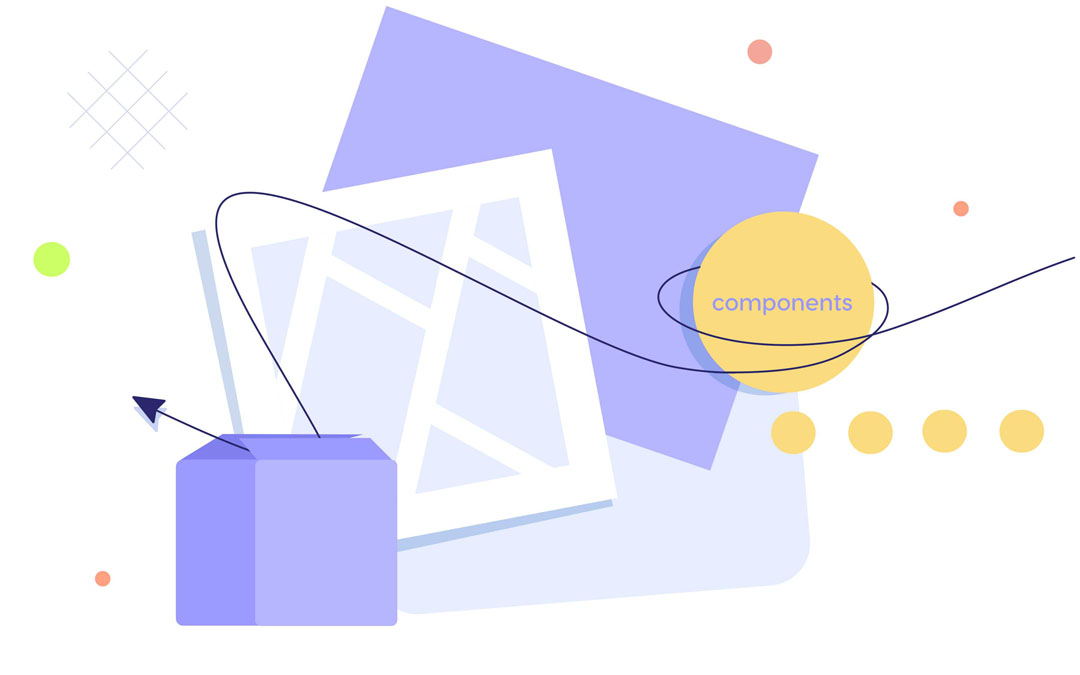
1. Forecasting the demand.
Demand forecasting means anticipating customers’ demand for goods drawing on market trends, historical data, insights obtained from customers, etc. Demand forecasting provides manufacturers with insight into how many products they will need to produce within a given timeline. In addition, bringing the manufacturing process into compliance with the customers’ future demand prevents manufacturers from under- and overproduction. Producing less goods will cause customers’ dissatisfaction and lost revenue, while overproduction will lead to additional inventory costs.
2. Capacity planning.
This component of production planning and scheduling allows manufacturers to assess if the production facility is capable of delivering the forecasted quantity of goods with the available resources: personnel, equipment, and time. It involves the analysis of workforce availability, equipment capabilities, work shifts as well as production line efficiency. Capacity planning aims to determine what output a manufacturer can produce with existing resources. It also contributes to reasonable and efficient resource utilization, preventing bottlenecks, and meeting an organization’s production goals.
3. Material planning and procurement.
At this stage, manufacturers need to identify the quantities and types of raw materials required to produce the anticipated goods within the required timelines. It takes into account demand forecasting, available capacity, and inventory. In turn, procurement ensures the purchasing of the required raw materials. So, the main purpose of this manufacturing planning and scheduling stage is to ensure that the required materials are available when they are needed. This minimizes production delays and roadblocks hampering the manufacturing process.
This stage is supported by Material Requirements Planning software that helps automate and increase the effectiveness of this process.
4. Production scheduling.
How to make a production schedule for manufacturing? This process should take into account resource availability and capacity as well as dependencies between production activities and constraints. Proper production scheduling contributes to a more streamlined manufacturing process, increases its efficiency, optimizes resource utilization, and facilitates timely delivery of goods to customers.
5. Resource allocation.
Resource allocation is one of the crucial components of production planning and scheduling that facilitates smooth manufacturing process. It involves assigning personnel and equipment/tools to tasks specified in the production schedule. Proper resource allocation will increase productivity, ensure optimal utilization of available resources as well as timely completion of the production process. At the same time, effective resource allocation can be rather challenging—resources are usually limited and manufacturers should utilize them to the full without overloading them.
6. Creating a Master Production Schedule.
A master production schedule (MPS) is a summation of all the previous stages—demand forecasting, capacity planning, material planning, procurement, and resource allocation. It’s a comprehensive plan that provides an idea of products to produce, their quantities, and timelines. This is the main document compiled before the start of the manufacturing process, which serves as a roadmap bringing together the information on production goals, resources, timelines, and inventory.
7. Production control and monitoring.
Production monitoring and control are performed after the production process has started to make sure the production process runs smoothly in accordance with the plan. It allows manufacturers to detect any deviations, inefficiencies, or issues in the workflow and address them as soon as possible. Regular real-time monitoring and control ensures the efficiency of production processes and contributes to timely product delivery.
As we see, each stage of manufacturing planning and scheduling plays an important role in streamlining the production processes and creating high-quality products on time, within budget, and in line with customers’ expectations.
When performing production planning and scheduling, manufacturers should take into account some factors that have a crucial impact on the effectiveness of these processes. We’ll consider them in the next section.
Production Planning and Scheduling: Main Factors to Keep in Mind

- The accuracy of demand forecasting.
This factor is crucial for effective production planning and scheduling, as it will set the right direction for the whole manufacturing process. You can leverage historical data, customer insights, and analyze market trends to make a reliable demand forecast.
- Resource availability.
Taking into account the availability of human and material resources helps avoid resource overloading, bottlenecks and delays as well as streamline the production flow.
- Capacity utilization.
Efficient utilization of production capacity helps balance workloads and deliver the required products without overloading equipment and personnel.
- Lead time.
Lead time can significantly affect the production schedule. To avoid unpleasant surprises and develop a realistic production schedule, it’s a good idea to take into account the suppliers’ lead times, delivery time frame, or other time constraints that can cause roadblocks in the production process.
- Flexibility.
Static planning and scheduling won’t allow you to respond adequately to possible changes and challenges in the manufacturing environment (e.g., procurement delays, equipment failure, etc.), so production plans and schedules should be flexible enough.
- Product complexity.
If a product is complex, it can be difficult to schedule all the production activities effectively. In this case, it might be a good idea to divide the work into smaller components that are easier to plan, schedule, and deliver.
- Quality control.
The focus on the high quality of the finished product is a must to ensure customers’ satisfaction and loyalty. So, while planning and scheduling the production flow, you need to include regular product quality control activities.
One of the tools facilitating effective production planning and scheduling, especially for project-based manufacturing, is project and resource management software. Read the next section to learn more about their capabilities and role in high-performing manufacturing.
Production Planning and Scheduling with Epicflow
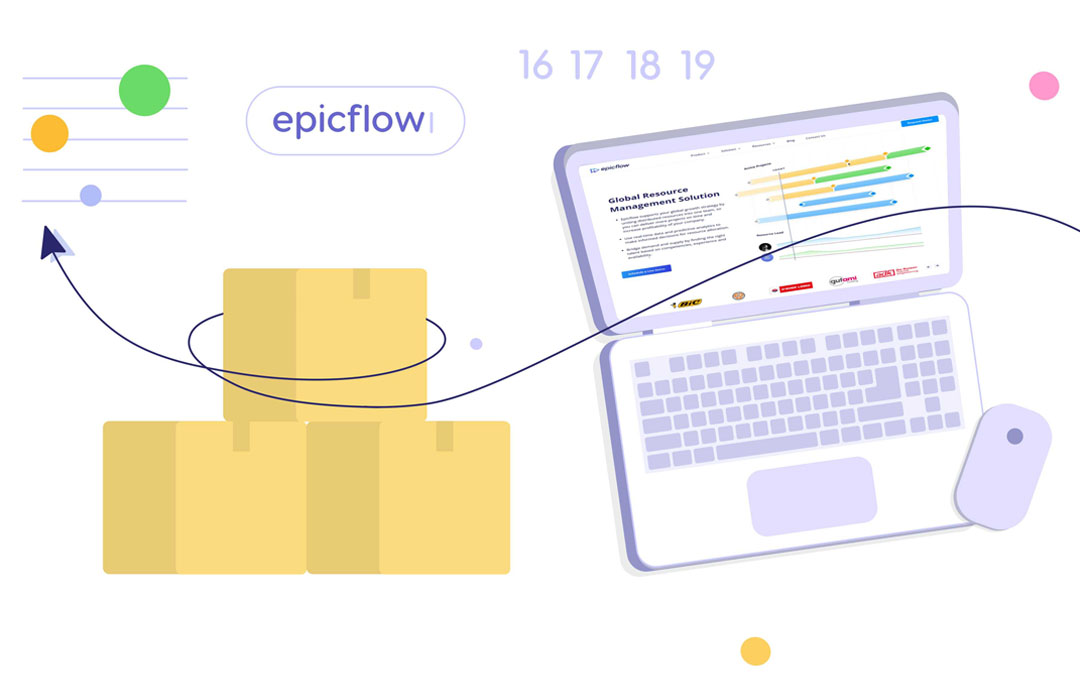
Epicflow is an advanced multi-project resource management tool that can serve as a planning and scheduling tool in complex dynamic manufacturing environments. Here’s how Epicflow contributes to optimizing these processes.
Optimized resource allocation
Epicflow enables efficient utilization of resources (personnel, raw materials, manufacturing facilities) across multiple projects thanks to intelligent resource allocation as well as capacity and workload management. This helps align production schedules with available resources, prevent bottlenecks and idle time. It also maximizes productivity and reduces the risks of over- or under-utilization of resources.
Demand forecasting and capacity planning
Epicflow uses advanced algorithms to forecast future demand for resources and plan equipment and labor capacity, which helps manufacturers ensure that required resources will be available when needed. Also, this facilitates meeting customer demand and responding to changing market conditions, helps avoid over- and underallocation as well as prevents unplanned expenditures.
Bottleneck prevention
By identifying potential bottlenecks before they occur, Epicflow helps prevent delays in the production process. The tool continuously analyzes workloads and signalizes if they become imbalanced to ensure intelligent resource distribution. It helps manufacturers keep the production flow on track and improves overall efficiency.
Real-time monitoring and control
Epicflow offers real-time data in dashboards and comprehensive workflow control to provide visibility into every phase of the production process and overall project performance. Managers can monitor progress, adjust priorities, and manage risks proactively by creating informed contingency plans. Also, Epicflow helps track resource performance, which is the main indicator of project health in a multi-project environment. This promotes more effective control and informed decision-making.
These are some of the most prominent capabilities contributing to effective production planning and management. Want to learn more about Epicflow’s capabilities that streamline manufacturing operations and contribute to timely and successful product delivery? Don’t hesitate to book a call with our experts.
Summing Up
Let’s summarize the most important statements of the article.
- Production planning is a strategic process of arranging all steps and elements required for effective and efficient manufacturing. It helps manufacturers meet customers’ demands, improves resource utilization, and optimizes costs.
- Production scheduling involves ordering all production activities and determining their timelines. Its main purpose is to streamline the production process and ensure timely delivery of products.
- The main difference between these two processes is that production planning is strategic and focused on meeting customers’ demands, while production scheduling is more tactical and focused on timely product delivery. At the same time, advanced planning and scheduling go hand in hand to ensure high production performance and provide organizations with a competitive advantage.
- The main stages of production planning and scheduling include demand forecasting, capacity planning, material planning, procurement, scheduling, resource allocation, creating a master production schedule, and production monitoring and control.
- When performing production planning and scheduling, it’s reasonable to take into account resource availability, product complexity, lead times, quality control, and inventory levels.
- Advanced capabilities of resource management software (e.g., Epicflow) streamline production planning and scheduling by providing real-time insights, prioritization and dynamic scheduling as well as efficient resource management.
